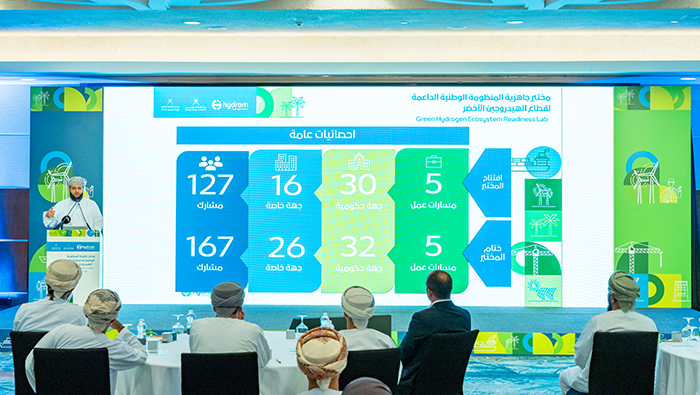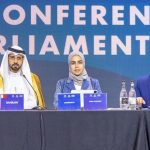Hydrom, in collaboration with the Oman Vision 2040 unit and the Ministry of Energy and Minerals, recently concluded a two-week Ecosystem Readiness Lab in Muscat. The aim was to outline a total of 26 initiatives to deliver Oman’s 2030 green hydrogen production targets. These multi-sector initiatives encompass five key focus areas including Permits, Contractors, Workforce Development, Logistics, and Local Content. Once approved, these initiatives will play a crucial role in advancing Oman’s strategic objectives, attracting private sector investment, promoting entrepreneurial innovation, and enhancing the national ecosystem’s readiness for green hydrogen projects.
Ahmed Ibrahim Al Abri, Planning & Regulatory Manager at Hydrom, highlighted the importance of the Ecosystem Readiness Lab outcomes in the journey to build a strong and sustainable green hydrogen ecosystem in Oman. The collaborative efforts between the public and private sectors aim to set the stage for long-term success and position Oman as a leader in the global green energy transition. The first workstream focuses on the construction and engineering sector, with initiatives aimed at enhancing the readiness and capacity of local firms to engage in large-scale green hydrogen projects. These include developing tender information packages, facilitating partnerships between local and international contractors, and launching marketing campaigns to position Oman as a global leader in green hydrogen.
The second workstream addresses the needs of skilled labor for green hydrogen projects, proposing initiatives such as aligning with labor market analysis, establishing skill incubators, and developing dedicated labor housing communities. The third workstream reviews the regulatory framework, particularly in relation to permits, with a focus on simplifying procedures to enable faster project execution through a proposed “single permit” system. The fourth workstream examines the logistical requirements necessary to support green hydrogen production and export, focusing on infrastructure and operational needs of Oman’s ports, transportation networks, and supply chains.
The fifth workstream, focused on local content, aims to enhance the participation of local businesses throughout the green hydrogen value chain and promote innovation and investment in the alternative energy sector. Initiatives include developing incentive programs, creating a financing mechanism, establishing an economic cluster for hydrogen-based industries, and founding the National Green Hydrogen Center for research and development. The implementation of these 26 initiatives will secure Oman’s position as a leader in green hydrogen production and export, supporting its commitment to sustainability and innovation. This will also help Oman meet its 2030 green hydrogen targets and solidify its role in the global clean energy transition.











